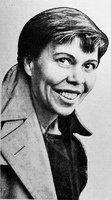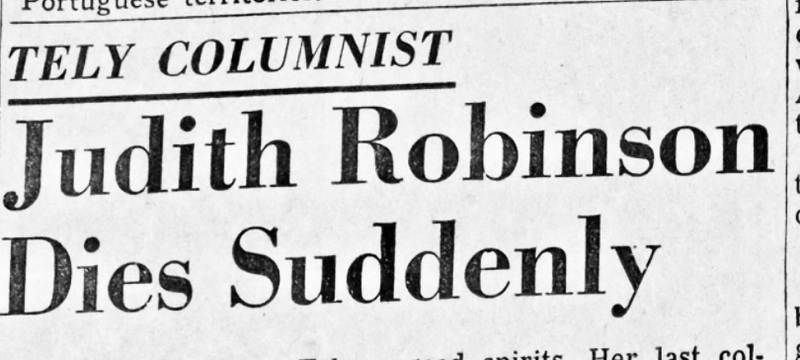Introduction
In this course, we spent an abundance of time considering the different methods and mediums that are used when doing historical research. From an old brush to the modern magazine, the number of items that can be used in study and reflection are plentiful – if you know what to look for.
At this point, our attention began to shift from Judith Robinson as our specific focus, and onto the purpose and legitimacy of obituaries as a research tool, and more importantly, as a genre. We started to question the various differences and similarities among her obituaries; the things that they did or did not say, and in what ways they may be useful to people – beyond the obvious.
After a trip to the archives and the beginnings of some tertiary research, these ideas combined into the skeleton of our final research project. Our hope is to use Judith Robinson's obituaries as a makeshift “case study” to better explore the intricacies of obituaries in both their writing, and their application in historic studies.
Our starting point is deceivingly simple: the obituaries and memorials found in the Judith Robinson's fond at McMaster University’s archives. Though much has been left a mystery, historical information alongside other items in the fond paint a picture of a sharp, talented, and politically-sound writer and woman. Why is this not discernible from her obituaries? The purpose of this writing genre is to give readers a reflection of their subject and capture their life rather than death. (1) They often include notes about family, education or occupation, and hobbies. In the cases of celebrities, politicians, and other well-known figures, they also note important achievements and accolades.(2) The job of an obituary is, quite literally, to tell the story of the deceased, and exist as something to remember them by.

